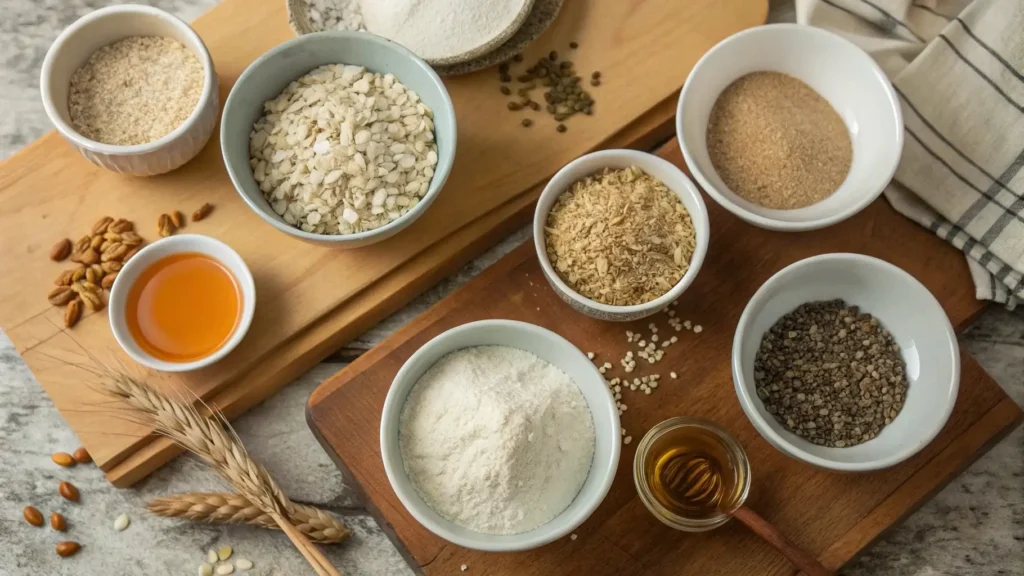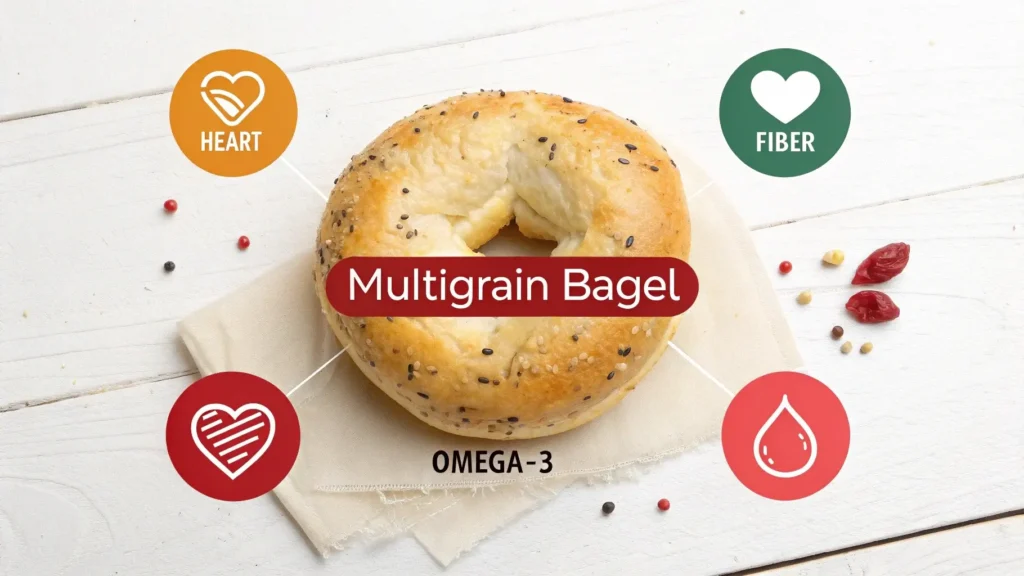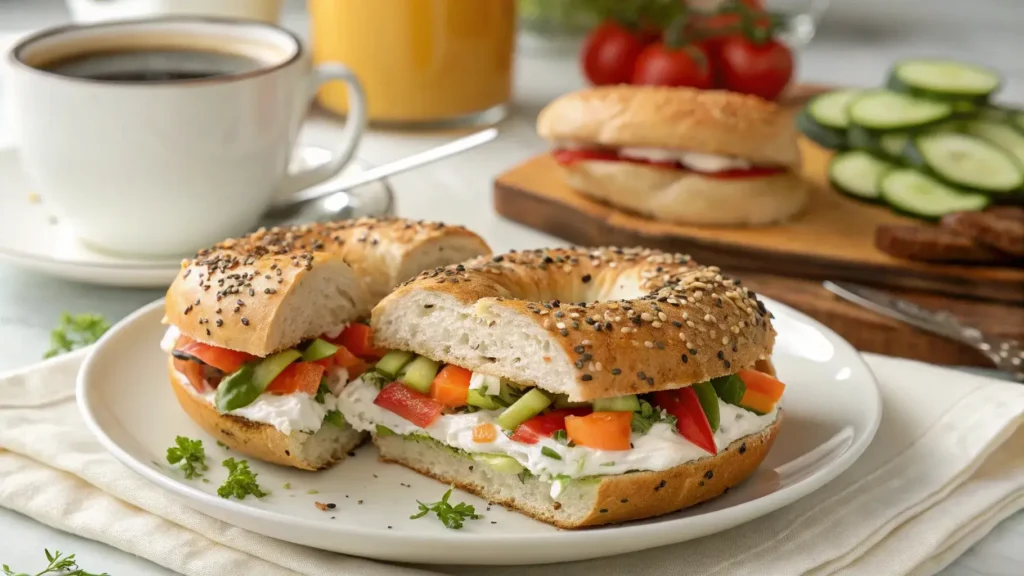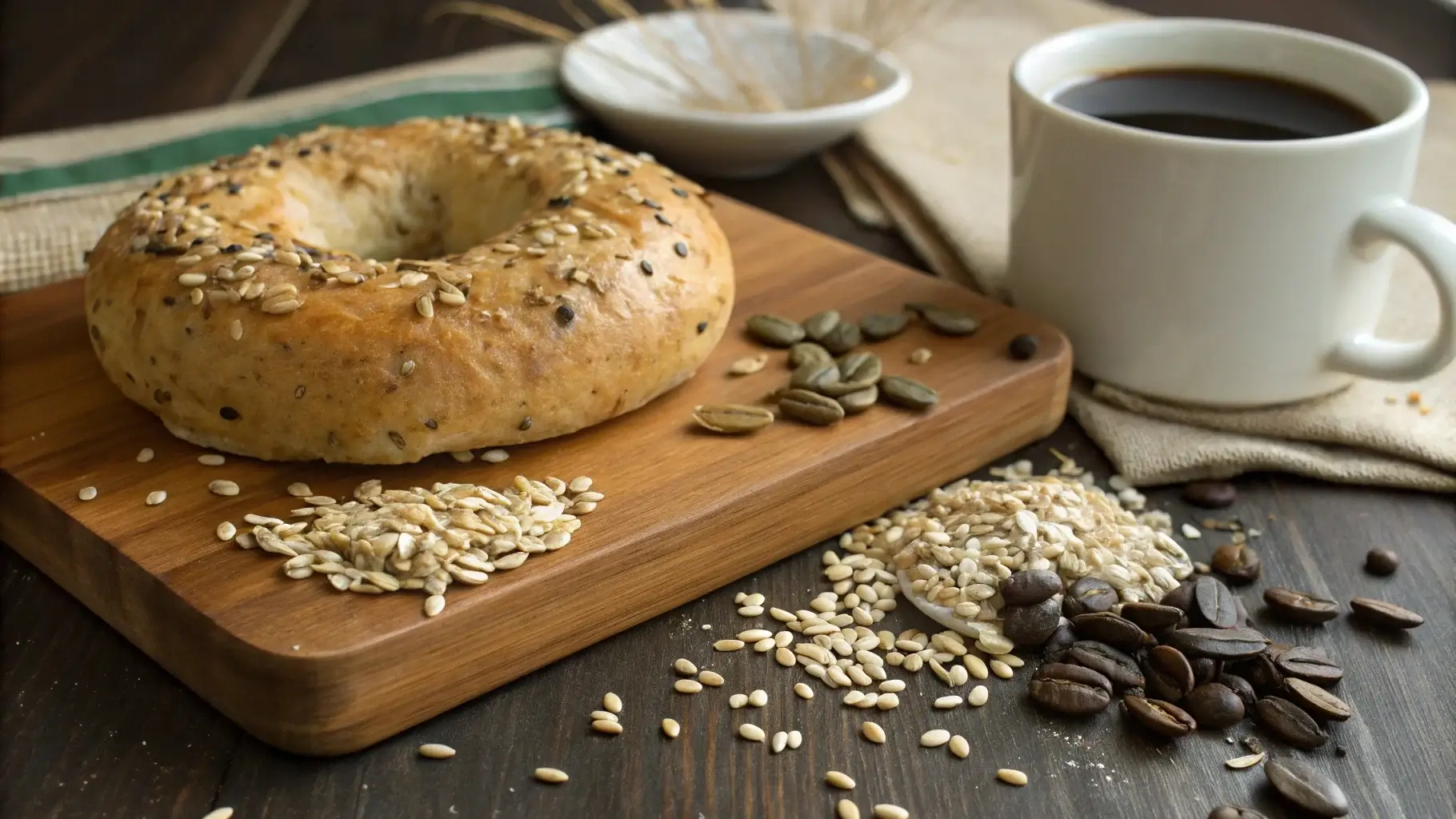Multigrain bagels have become a breakfast favorite for health-conscious eaters and bagel enthusiasts alike. But what is in a multigrain bagel that makes it so appealing? From its nutritious grains and seeds to its rich, hearty flavor, this versatile bagel is more than just a tasty bread roll. In this article, we’ll uncover the ingredients, benefits, and creative ways to enjoy this wholesome treat. Let’s dig in!
Table of contents
- Introduction to Multigrain Bagels
- Ingredients in a Multigrain Bagel
- How Multigrain Bagels Are Made
- Health Benefits of Multigrain Bagels
- Variations of Multigrain Bagels
- How to Incorporate Multigrain Bagels into Your Diet
- FAQs About Multigrain Bagels
- Conclusion: Why Multigrain Bagels Deserve a Spot in Your Diet
Introduction to Multigrain Bagels
What is in a Multigrain Bagel? An Overview of Ingredients
Multigrain bagels are a type of bagel made with a combination of flours, grains, and seeds. Unlike plain bagels, which often rely on refined flour, multigrain bagels incorporate whole grains like oats, barley, and flaxseeds to deliver a heartier texture and more robust flavor. These bagels have grown in popularity, particularly among those who want a more nutritious alternative to traditional baked goods.
Why Multigrain Bagels Are a Popular Choice for Breakfast
Thanks to their blend of grains, multigrain bagels have carved out a niche in today’s food trends. With a rising focus on whole foods and fiber-rich diets, these bagels appeal to people looking for satisfying options that still support a balanced diet. Moreover, they’re versatile and can be enjoyed as a savory sandwich base or topped with sweet spreads.
Nutritional Appeal of Multigrain Bagels
One of the biggest draws of multigrain bagels is their nutritional profile. Packed with fiber, protein, and essential vitamins from whole grains, they provide lasting energy without the empty calories of heavily processed foods. Whether you’re looking to fuel your morning or refuel after a workout, multigrain bagels deliver on taste and health benefits.
Ingredients in a Multigrain Bagel
Primary Ingredients: Flours and Grains
When asking “What is in a multigrain bagel?”, it’s essential to start with its foundation: flours and grains. The base of most multigrain bagels is a combination of wheat flour and whole wheat flour. These flours provide structure while adding a touch of earthy flavor and a boost of fiber.
But that’s just the beginning! Many recipes also include hearty grains like oats, barley, and millet. These grains not only enhance the texture but also contribute to the nutritional value. For instance, oats are known for their cholesterol-lowering benefits, while barley is packed with minerals like magnesium.
Seeds and Additives for Flavor and Nutrition
What truly sets multigrain bagels apart is their assortment of seeds and additional ingredients. Flaxseeds, sunflower seeds, and even quinoa are often sprinkled into the dough or used as toppings. These seeds add a nutty crunch and are rich in healthy fats and antioxidants.
Sweeteners like molasses or honey are sometimes included for a subtle sweetness that balances the flavors. Meanwhile, baking agents such as yeast, salt, and even vinegar play vital roles in creating the bagel’s signature texture and taste.
Whether you’re biting into one from your favorite bakery or baking them at home, multigrain bagels are a delicious blend of wholesome ingredients.

How Multigrain Bagels Are Made
Exploring the Process: What is in a Multigrain Bagel Dough?
Understanding “What is in a multigrain bagel?” also means exploring how it’s made. It all starts with preparing the dough. Bakers mix flours, grains, seeds, water, and yeast to create a sticky but workable dough. Salt and sweeteners are added at this stage to ensure a balanced flavor.
Kneading is a critical step here—it ensures the gluten develops properly, giving the bagel its chewy texture. Some recipes call for the dough to rest, allowing the yeast to activate and create a light, airy structure.
Shaping and Boiling: The Bagel-Specific Techniques
Once the dough is ready, it’s divided into portions and shaped into bagels. This classic round shape with a hole in the middle isn’t just for aesthetics—it helps the bagel cook evenly.
The next step is unique to bagels: boiling. The raw bagels are briefly boiled in water, often with a touch of honey or malt syrup. This process gives bagels their chewy exterior while keeping the inside soft.
Baking for a Perfect Texture
Finally, the boiled bagels are baked in a hot oven until golden brown. The combination of grains and seeds on the surface creates a visually appealing and flavorful crust. When done right, the result is a multigrain bagel that’s chewy, hearty, and full of wholesome goodness.
Health Benefits of Multigrain Bagels
High in Fiber and Essential Nutrients
Multigrain bagels are packed with fiber, making them an excellent choice for those seeking a healthier diet. The grains and seeds like oats, flaxseeds, and quinoa contribute not only to digestion but also to sustained energy throughout the day. Fiber-rich foods like these bagels can help you feel fuller for longer, making them a great breakfast or snack option.
Great Source of Complex Carbohydrates
When asking “What is in a multigrain bagel?”, it’s important to highlight the role of complex carbohydrates. These carbs are slower to digest compared to refined ones, providing a steady release of energy. This makes multigrain bagels a favorite among athletes, busy professionals, and anyone needing an energy boost without a sugar crash.
Lower Cholesterol and Heart-Healthy Grains
Grains like oats and barley in multigrain bagels actively help lower cholesterol levels. Additionally, seeds such as flaxseeds and sunflower seeds provide omega-3 fatty acids, which boost heart health. By combining these nutritious ingredients, multigrain bagels offer a delicious and effective way to support a balanced diet.

Variations of Multigrain Bagels
Gluten-Free Multigrain Bagels
For those with gluten sensitivities or preferences, gluten-free multigrain bagels are a fantastic alternative. These versions often use brown rice flour, tapioca flour, and potato starch instead of wheat-based ingredients. Despite the swap, they retain the same hearty flavor and texture that multigrain bagels are loved for.
Sweet vs. Savory Variations
You can tailor multigrain bagels to satisfy both sweet and savory cravings. For a sweet twist, try adding raisins or baking a drizzle of honey into the dough. If you prefer savory flavors, top them with garlic, onion, or even everything bagel seasoning. These customizable options make multigrain bagels a versatile and delicious choice for any meal.
Customizing with Different Grains and Seeds
If you’re making your own multigrain bagels or exploring different brands, consider experimenting with grains like spelt, buckwheat, or amaranth. Toppings such as chia seeds, sesame seeds, or even pumpkin seeds add variety and nutritional value. The possibilities are nearly endless!
How to Incorporate Multigrain Bagels into Your Diet
As a Breakfast Staple
Multigrain bagels are a fantastic way to kick-start your morning. They pair beautifully with classic toppings like cream cheese, peanut butter, or even avocado. Thanks to their high fiber content, they provide lasting energy, making them ideal for busy mornings. When you wonder “What is in a multigrain bagel?”, the wholesome grains and seeds ensure a nutritious breakfast that satisfies hunger and fuels productivity.
Creative Sandwich Ideas
Beyond breakfast, multigrain bagels make for excellent sandwich bases. For a savory option, layer smoked salmon, cucumber slices, and cream cheese for a fresh twist. Alternatively, create a hearty lunch sandwich by adding grilled chicken, spinach, and hummus. These bagels’ firm texture holds up well to robust fillings, making them a versatile choice for any meal.
Pairing with Spreads and Toppings
The neutral flavor of multigrain bagels allows them to pair equally well with sweet or savory spreads. Try topping them with almond butter and banana slices for a sweet snack, or add a dollop of spicy jalapeño cream cheese for a bold flavor. The variety of toppings available ensures these bagels never get boring.

Multigrain bagels are incredibly versatile. For a savory option, pair them with a butter chicken spread or a creamy cheese topping. For a sweet twist, try them with brown sugar coffee or a dollop of fruit jam like raspberry jelly.
FAQs About Multigrain Bagels
What are multigrain bagels made of?
Bakers create multigrain bagels using a blend of flours, including wheat flour and whole wheat flour, combined with grains and seeds like oats, barley, flaxseeds, and sunflower seeds. Many recipes also add sweeteners, such as molasses or honey, along with essential baking ingredients like yeast, salt, and vinegar. Together, these components produce a hearty, flavorful bagel loaded with nutrition and perfect for any meal.
Is a multigrain bagel healthy?
Yes, multigrain bagels offer a healthier alternative to plain bagels. They include whole grains and seeds, which deliver fiber, protein, and essential nutrients. These ingredients not only provide long-lasting energy but also support digestion. Additionally, the healthy fats and omega-3s from flaxseeds and sunflower seeds can help lower cholesterol levels, making multigrain bagels a smart choice for a nutritious diet.
What’s on a multigrain bagel?
Grains and seeds like oats, sesame seeds, flaxseeds, and sunflower seeds often top a multigrain bagel. These toppings not only add a satisfying crunch and rich flavor but also provide significant nutritional benefits. They deliver healthy fats, fiber, and essential vitamins, making multigrain bagels a nutritious and delicious choice for any meal.
Is a whole grain bagel healthy?
Yes, a whole grain bagel is a healthy option because it is made entirely from whole grains, which retain their fiber and nutrient content. Whole grain bagels are a great source of complex carbohydrates and can provide steady energy without the quick sugar spikes often associated with refined flour bagels. Plus, they are excellent for supporting heart health and digestion.
Conclusion: Why Multigrain Bagels Deserve a Spot in Your Diet
The Nutritional and Culinary Versatility of Multigrain Bagels
When considering “What is in a multigrain bagel?”, it becomes clear that these bagels are a powerhouse of nutrition and flavor. Packed with whole grains, seeds, and essential nutrients, they provide a balanced mix of fiber, protein, and healthy fats. This combination makes them not only satisfying but also a versatile base for countless meals and snacks. From breakfast spreads to hearty lunch sandwiches, multigrain bagels seamlessly fit into any diet.
Encouraging Healthier Eating Habits with Multigrain Choices
By opting for multigrain bagels, you’re making a conscious choice to prioritize whole foods and better nutrition. Their heart-healthy ingredients and complex carbohydrates support long-lasting energy and overall well-being. Moreover, their adaptability to sweet and savory toppings ensures there’s always a delicious way to enjoy them. So next time you reach for a bagel, consider the wholesome goodness of multigrain options.

Read more about multigrain options with our ultimate guide to multigrain bagels.

